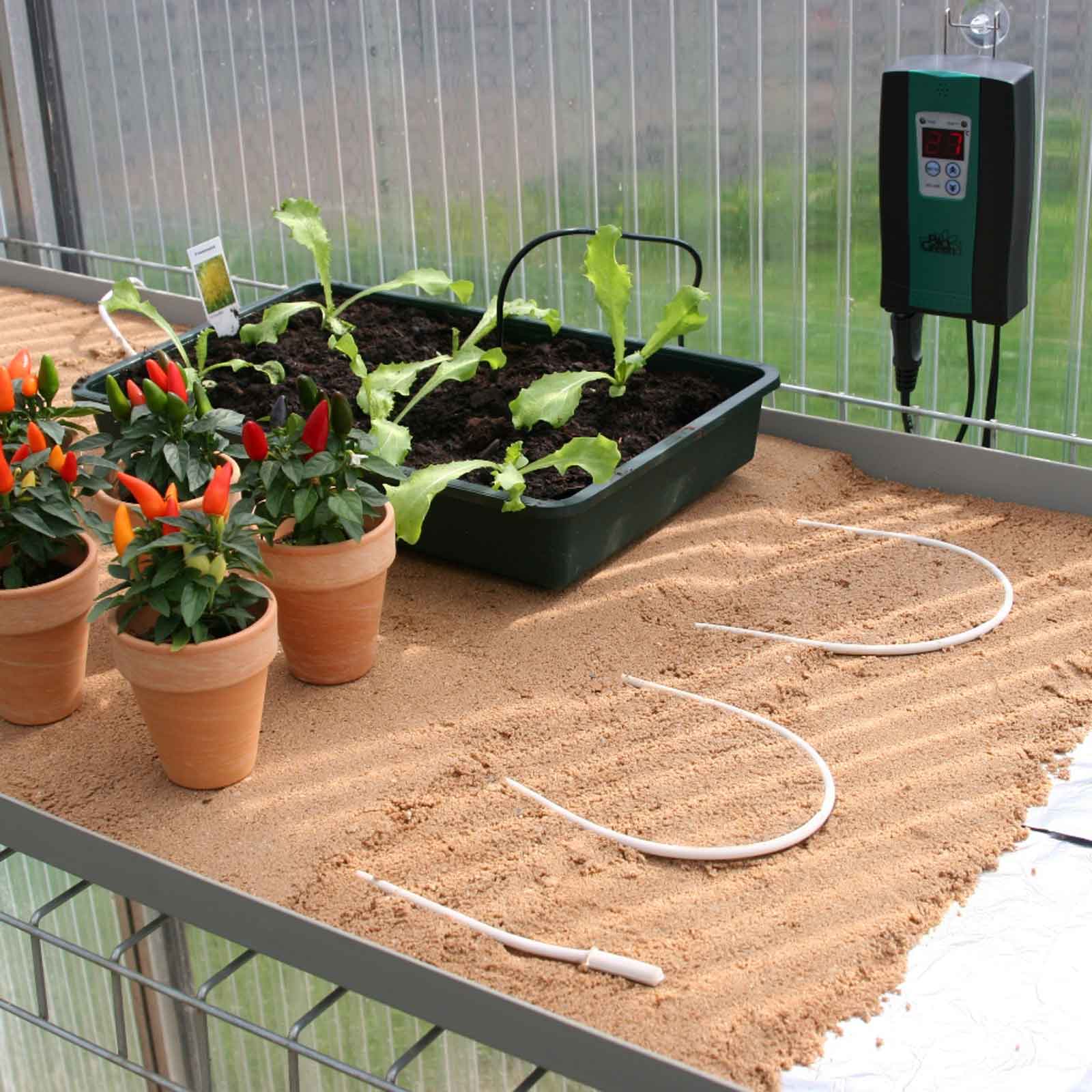Unlock the transformative power of heat cables for plants! These innovative devices offer a controlled and efficient way to elevate soil temperature, fostering optimal plant growth and flourishing root systems. Join us as we delve into the fascinating world of heat cables, exploring their benefits, installation techniques, and optimization strategies.
Harnessing the science of soil warming, heat cables mimic the natural heat generated by the sun, extending the growing season and promoting vigorous plant development. Whether you’re an experienced gardener or just starting your horticultural journey, heat cables offer a reliable and effective solution to enhance your plant’s well-being.
Heat Cables for Plant Growth

Heat cables provide a controlled and efficient method to enhance plant growth by optimizing soil temperature and root development. They emit gentle heat, warming the soil around the roots, which stimulates root growth, nutrient uptake, and overall plant health.
Types of Heat Cables
There are two main types of heat cables:
- Constant Wattage Cables: Provide a consistent heat output throughout their length, making them ideal for large areas or plants with extensive root systems.
- Self-Regulating Cables: Adjust their heat output based on the surrounding soil temperature, preventing overheating and ensuring optimal conditions for plant growth.
Benefits of Using Heat Cables
- Improved Root Development: Heat cables stimulate root growth by creating a warm and conducive environment for root development. Healthy roots enhance nutrient uptake, water absorption, and overall plant stability.
- Faster Germination: Warm soil temperatures accelerate seed germination, resulting in earlier emergence and seedling growth.
- Extended Growing Season: Heat cables allow for earlier planting and extend the growing season, particularly in colder climates, by maintaining optimal soil temperatures.
- Increased Crop Yield: Optimized soil temperatures and improved root development contribute to increased crop yield and quality.
Suitability for Various Plants
Heat cables are suitable for a wide range of plants, including:
- Vegetables: Tomatoes, peppers, cucumbers, eggplants
- Fruits: Strawberries, blueberries, raspberries
- Herbs: Basil, thyme, rosemary, oregano
- Flowers: Roses, lilies, dahlias, chrysanthemums
When selecting heat cables, consider the plant species, soil type, and desired soil temperature range.
Installation and Maintenance of Heat Cables

Installing heat cables in plant beds requires careful planning and proper execution to ensure optimal performance and safety. The following guidelines will assist in the successful installation and maintenance of heat cables:
Cable Layout and Spacing, Heat cables for plants
Determine the optimal cable spacing based on the plant species, soil type, and desired soil temperature. Closer spacing provides more uniform heating, while wider spacing reduces energy consumption. A spacing of 6-12 inches is generally recommended for most plants.
Cable Depth
Bury the heat cables at a depth of 6-8 inches below the soil surface. This depth ensures even heat distribution and minimizes heat loss. Avoid placing the cables too close to the surface, as this can lead to overheating and damage to plant roots.
Insulation and Grounding
Insulate the heat cables with a protective sleeve or conduit to prevent damage from moisture and soil contact. Ensure proper grounding of the cables to prevent electrical hazards. Grounding should be done in accordance with local electrical codes.
Troubleshooting and Optimization: Heat Cables For Plants
Heat cables are generally reliable, but like any electrical device, they can sometimes encounter problems. Understanding common issues and their solutions can help ensure optimal performance.
Regular maintenance and testing are crucial for detecting potential issues early on. Testing heat cables involves measuring their resistance and comparing it to the manufacturer’s specifications. Deviations in resistance indicate potential damage or malfunction.
Advanced Optimization Techniques
Beyond basic troubleshooting, advanced techniques can further enhance heat cable performance. Thermostats and controllers allow for precise temperature regulation, ensuring consistent root zone temperatures and preventing overheating.
Thermostats monitor temperature and automatically adjust heat output, preventing fluctuations and maintaining optimal conditions for plant growth.
Controllers provide even more sophisticated control, enabling programming of heating schedules and integration with other environmental control systems. By optimizing temperature management, these advanced techniques promote healthy root development and maximize plant growth potential.